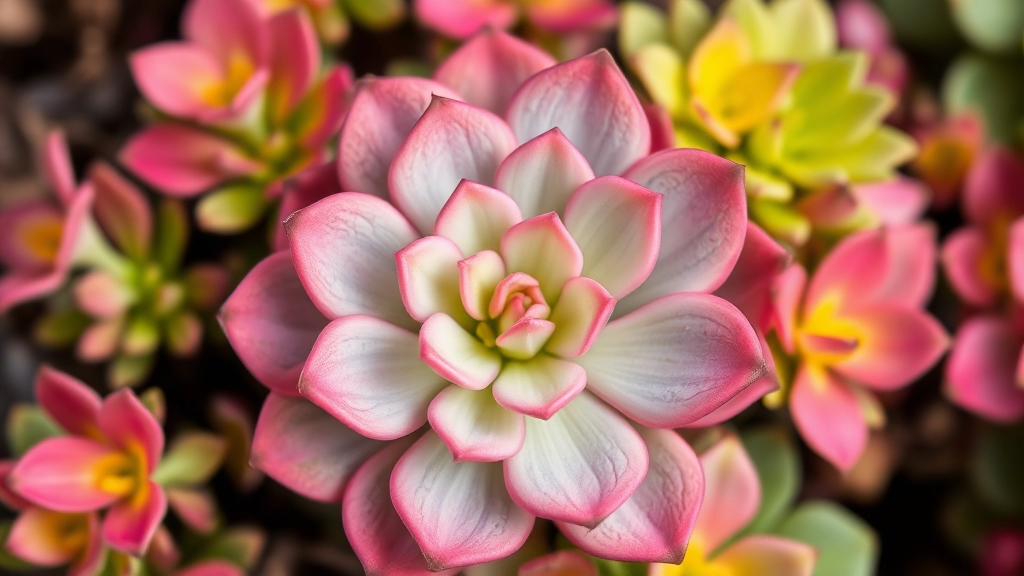Guide to Thriving Blooming Succulent Kalanchoe
If you’re looking to get your Blooming Succulent Kalanchoe to thrive, you’ve come to the right place. This guide will walk you through the best conditions for Kalanchoe to bloom, covering everything from light and watering requirements to common care mistakes. Whether you’re a seasoned gardener or just starting, these tips will help you maintain vibrant and healthy blooms.
Encouraging Reblooming
To encourage reblooming in your Kalanchoe, you’ll need to focus on proper soil, fertilization, and pest management. We’ll also delve into propagation techniques and how to prune and maintain your plant after flowering. By following these steps, your Kalanchoe will not only bloom beautifully but also stay robust throughout its life cycle.
Best Conditions for Kalanchoe to Bloom
Are you struggling to get your Kalanchoe to bloom? You’re not alone. Many plant enthusiasts face the same challenge, but understanding the best conditions for Kalanchoe flowering can make all the difference.
Optimal Light Conditions
Kalanchoe thrives in bright, indirect sunlight. For more detailed information, you can check out our guide on optimal sunlight for thriving Kalanchoe plants.
- Location: Place it near a south-facing window for maximum exposure.
- Duration: Aim for at least 6 hours of light daily.
- Avoid: Direct sunlight can scorch the leaves, so be cautious.
Temperature and Humidity
Temperature plays a crucial role in Kalanchoe’s blooming cycle. If your plant is not flowering, it might be helpful to read about the causes and solutions for non-flowering Kalanchoe.
- Ideal Range: Keep your Kalanchoe in temperatures between 18°C to 24°C (65°F to 75°F).
- Humidity: Moderate humidity is preferred; avoid overly damp environments.
Watering Practices
Watering is another vital aspect of Kalanchoe care.
- Frequency: Water when the top inch of soil feels dry.
- Drainage: Ensure the pot has drainage holes to prevent root rot.
- Technique: Water thoroughly, allowing excess to drain out.
Fertilization for Blooms
To encourage blooming, proper fertilization is essential.
- Type: Use a balanced, water-soluble fertilizer.
- Frequency: Fertilize every 4-6 weeks during the growing season.
Light and Watering Requirements for Healthy Growth
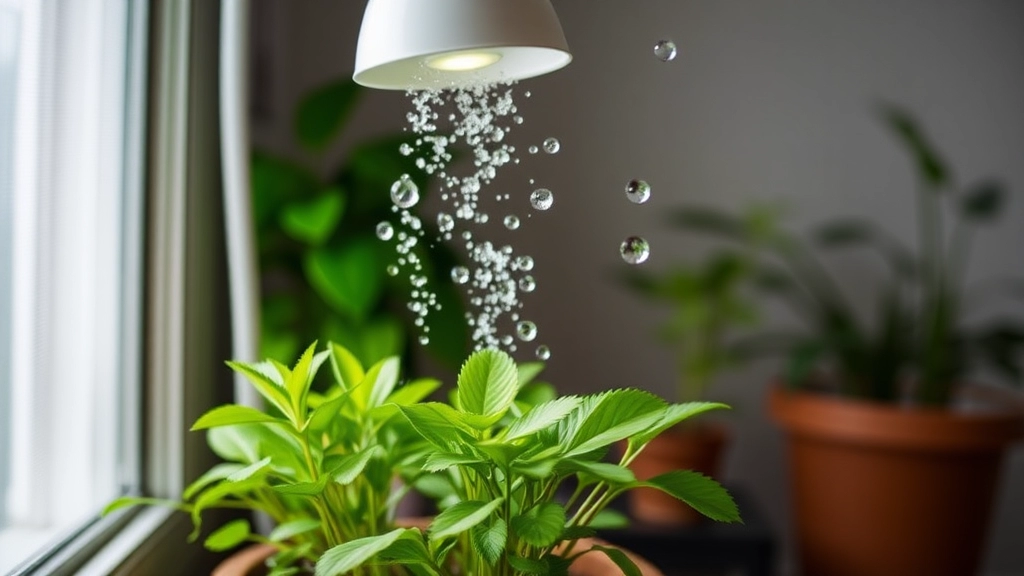
So, you’re looking to keep your Kalanchoe thriving, right? It’s all about getting the light and watering just right. Trust me, these two elements are game-changers for your plant’s health and blooming potential.
Light Requirements
Kalanchoe loves the sun, but not too much direct sunlight. Here’s the scoop:
- Ideal Spot: Place your Kalanchoe in a bright spot where it can soak up indirect sunlight. A south-facing window is usually perfect.
- Too Much Sun: If the leaves start to look scorched or bleached, it’s a sign you need to move it to a shadier spot.
- Too Little Light: On the flip side, if your plant looks leggy or is growing slowly, it might be craving more light.
Watering Tips
Now, let’s talk about watering. This is where many folks go wrong.
- Water Sparingly: Kalanchoe is a succulent, which means it stores water in its leaves. Water only when the top inch of soil feels dry.
- Drainage Matters: Make sure your pot has drainage holes. You don’t want your Kalanchoe sitting in water—it’ll lead to root rot.
- Seasonal Adjustments: In the growing season (spring and summer), you might need to water more frequently. In winter, cut back on watering since the plant goes dormant.
Quick Recap
- Light: Bright, indirect sunlight is best. Avoid scorching direct rays.
- Water: Let the soil dry out between waterings. Less is more!
How to Encourage Reblooming in Kalanchoe
Are you wondering how to get your Kalanchoe to bloom again after its initial flowering? Many plant enthusiasts share this concern, as the vibrant blooms can be a highlight of any indoor garden.
To encourage your Kalanchoe to rebloom, consider the following strategies:
- Light Exposure: Ensure your plant receives plenty of bright, indirect sunlight. A south-facing window is ideal. If the leaves start to stretch towards the light, it’s a sign that your plant needs more exposure.
- Watering Schedule: Water your Kalanchoe thoroughly but allow the soil to dry out between waterings. Overwatering can lead to root rot, which will hinder blooming.
- Pruning: After the initial blooms fade, prune off the spent flowers and any dead leaves. This helps redirect energy back into the plant for new growth.
- Temperature Control: Keep your Kalanchoe in a warm environment, ideally between 18°C and 24°C. Avoid placing it near drafts or cold windows.
- Fertilization: Use a balanced, water-soluble fertilizer every few weeks during the growing season. This will provide the necessary nutrients to support new blooms.
- Dormancy Period: Allow your plant to enter a dormant phase after blooming. Reduce watering and refrain from fertilizing for a few weeks. This rest period is crucial for stimulating future blooms.
For more detailed information, check out our Complete Guide to Kalanchoe Plant Care and learn about Why Your Kalanchoe Isn’t Flowering.
Common Mistakes in Kalanchoe Care and How to Avoid Them
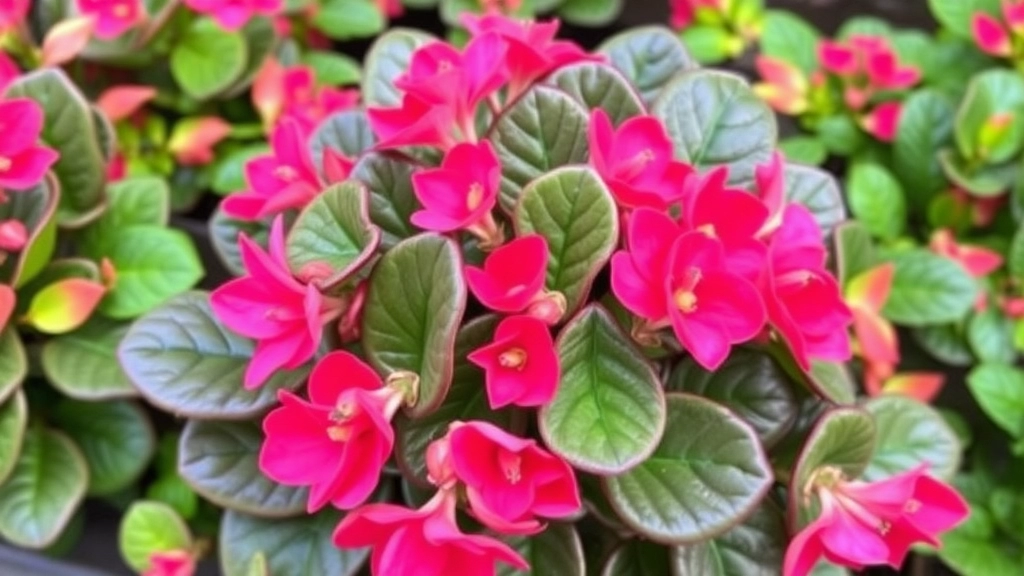
When nurturing Kalanchoe, many enthusiasts encounter pitfalls that can hinder their plant’s growth and blooming potential. Recognising these common mistakes is essential for maintaining a vibrant and healthy Kalanchoe.
Overwatering
One of the most prevalent issues is overwatering.
- Signs of Overwatering: Yellowing leaves, mushy stems, and root rot.
- Solution: Allow the top inch of soil to dry out before watering again. Use well-draining soil to prevent excess moisture.
Insufficient Light
Kalanchoe thrives in bright, indirect sunlight.
- Signs of Insufficient Light: Leggy growth and sparse blooms.
- Solution: Place your plant near a window where it can receive ample light for at least six hours a day.
Ignoring Fertilisation Needs
Many Kalanchoe owners overlook the importance of fertilisation.
- Signs of Nutrient Deficiency: Pale leaves and stunted growth.
- Solution: Use a balanced fertiliser during the growing season, typically every four to six weeks.
Neglecting Pruning
Failure to prune can lead to overcrowding and reduced airflow.
- Signs of Neglect: Overgrown stems and fewer blooms.
- Solution: Regularly trim back leggy stems and spent flowers to encourage new growth.
Poor Soil Choice
Using the wrong type of soil can severely affect your Kalanchoe’s health.
- Signs of Poor Soil: Poor drainage and compacted roots.
- Solution: Opt for a cactus or succulent mix that promotes drainage.
Propagating Kalanchoe from Cuttings or Offsets
Have you ever wondered how to expand your Kalanchoe collection without spending a fortune?
Propagating Kalanchoe can be a rewarding and straightforward process.
Understanding Propagation
Kalanchoe can be propagated through two primary methods: cuttings and offsets.
- Cuttings: This method involves taking a healthy leaf or stem from an existing plant.
- Offsets: These are small plants that grow at the base of the parent plant.
Steps for Propagating Kalanchoe from Cuttings
- Select a Healthy Stem: Choose a stem that is healthy and free from disease.
- Cut the Stem: Use sterilised scissors to take a cutting about 10-15 cm long.
- Allow to Callous: Let the cutting dry for a few days until the cut end forms a callous. This helps prevent rot when planted.
- Plant the Cutting: Place the calloused end into well-draining soil.
- Water Sparingly: Water the cutting lightly, ensuring the soil remains moist but not soggy.
- Provide Light: Place the cutting in a bright, indirect light area until roots develop.
Steps for Propagating Kalanchoe from Offsets
- Identify Offsets: Look for small plants growing at the base of the parent Kalanchoe.
- Gently Remove: Carefully separate the offset from the main plant, ensuring some roots are attached.
- Prepare for Planting: Allow the offset to dry for a few hours to form a callous.
- Plant in Soil: Place the offset in well-draining soil, just like with cuttings.
- Water and Light: Follow the same watering and light guidelines as with cuttings.
Tips for Successful Propagation
- Use Well-Draining Soil: A cactus mix or a blend of potting soil and sand works best.
- Maintain Humidity: Covering cuttings with a plastic bag can help retain moisture.
- Be Patient: Rooting can take a few weeks, so don’t rush the process.
For more detailed steps, you might want to check out our guide on how to propagate Kalanchoe Copper Spoons cuttings. Additionally, if you’re interested in learning about different Kalanchoe varieties, our Mother of Thousands care and propagation guide is a great resource.
Soil and Fertilization Tips for Vibrant Blooms
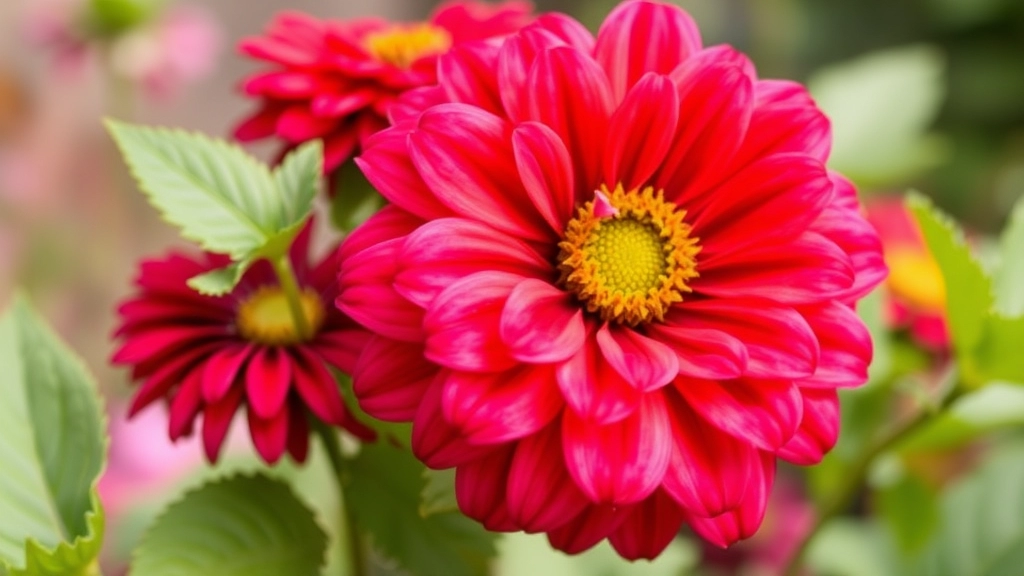
So, you’ve got your Kalanchoe thriving, but how do you make those blooms pop? It all starts with the right soil and fertilization.
Choosing the Right Soil
Kalanchoe loves well-draining soil. It’s crucial for preventing root rot. Here are some options:
- Cactus Mix: This is a great choice as it’s designed for succulents.
- DIY Mix: Combine regular potting soil with sand or perlite for extra drainage.
- pH Level: Aim for a slightly acidic to neutral pH (around 6.0 to 7.0).
Fertilization Tips
Now, let’s talk about feeding your plant. Proper fertilization can make a world of difference in blooming.
- Frequency: Fertilize every 4-6 weeks during the growing season (spring and summer).
- Type of Fertilizer: Use a balanced, water-soluble fertilizer (like 10-10-10) diluted to half strength.
- Timing: Start fertilizing when you see new growth and stop as the plant goes dormant in fall.
Signs Your Kalanchoe Needs More Nutrients
Keep an eye out for these signs:
- Pale Leaves: This could indicate a nutrient deficiency.
- Stunted Growth: If your plant isn’t growing, it might need a boost.
By giving your Kalanchoe the right soil and nutrients, you’ll set it up for a blooming spectacle.
Managing Pests and Diseases in Kalanchoe Succulents
After ensuring your Kalanchoe is thriving with the right conditions, it’s crucial to keep an eye out for pests and diseases that can disrupt its growth and flowering.
How to Prune and Maintain Kalanchoe After Flowering
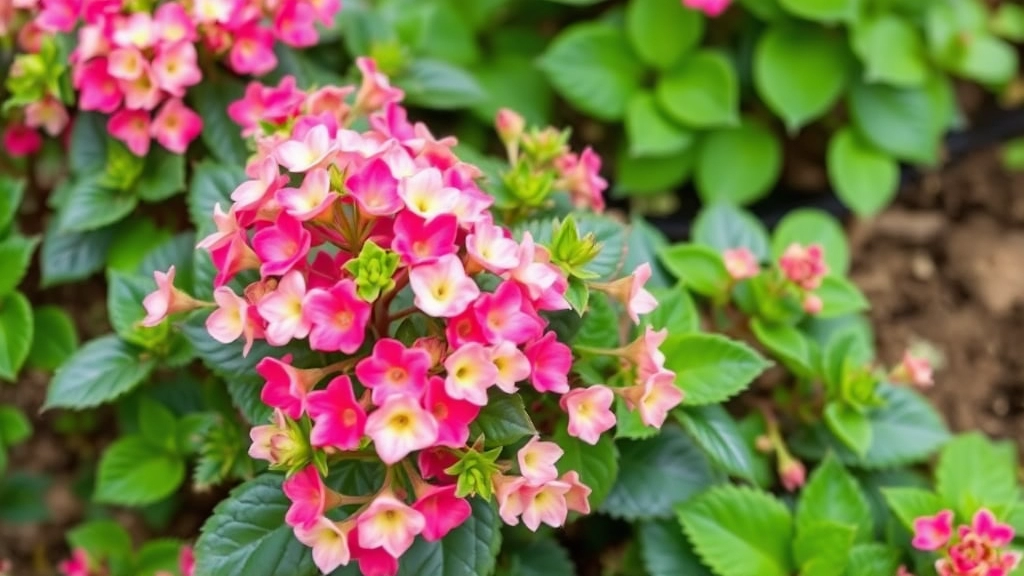
So, your Kalanchoe has finished its blooming cycle, and you’re probably wondering what to do next.
Pruning is key to keeping your plant healthy and encouraging future blooms. Here’s how to do it right:
- Timing is Everything:
- Wait until the flowers have faded and the plant starts to look a bit scraggly. This is your cue to prune.
- Remove Dead Blooms:
- Snip off the spent flowers. This helps the plant focus its energy on new growth instead of seed production.
- Trim Back Leggy Growth:
- If your Kalanchoe is looking a bit stretched, don’t hesitate to cut back the longer stems. Aim to keep it bushy and compact.
- Shape It Up:
- Use clean, sharp scissors or pruning shears to shape the plant. Aim for a rounded form, which encourages a fuller appearance.
- Leave Some Leaves:
- Always ensure you leave a few healthy leaves on each stem. This allows the plant to continue photosynthesis and stay strong.
- Check for Pests:
- While you’re pruning, take a moment to inspect for any pests or diseases. Catching these early can save your plant a lot of stress.
Once you’ve pruned, it’s time to shift focus to maintenance.
Maintenance Tips
- Watering:
- After pruning, give your Kalanchoe a good drink, but don’t overdo it. Allow the soil to dry out between waterings.
- Light Conditions:
- Ensure it’s still getting plenty of bright, indirect light. This helps it recover and encourages new growth.
- Fertilization:
- Consider using a diluted liquid fertilizer every few weeks during the growing season to give it a boost.
- Humidity and Temperature:
- Keep the plant in a warm environment, ideally between 20-25°C (68-77°F). Avoid cold drafts.
Kalanchoe Care During Dormant Periods
As we transition into the dormant period for Kalanchoe, it’s essential to adjust our care routine to ensure these resilient plants remain healthy and ready to thrive when the growing season returns.
Understanding Dormancy
During dormancy, Kalanchoe slows down its growth, conserving energy for the next blooming cycle. This period typically occurs in late autumn through winter, and understanding how to care for your plant during this time is crucial.
Key Care Tips for Dormant Kalanchoe
- Reduce Watering:
- Cut back on watering frequency.
- Allow the top inch of soil to dry out completely before rewatering.
- Lower Light Exposure:
- Move your Kalanchoe to a spot with indirect light.
- Avoid placing it in direct sunlight, which can stress the plant.
- Maintain Temperature:
- Keep the temperature between 10-15°C (50-60°F).
- Avoid cold drafts and sudden temperature changes.
- Limit Fertilisation:
- Hold off on fertilising until the growing season resumes.
- Excess nutrients during dormancy can lead to root burn.
Monitoring Your Plant
During this period, keep an eye out for signs of distress, such as yellowing leaves or wilting.
- Adjust Care Accordingly:
- If you notice these signs, consider further reducing watering or adjusting light exposure.
Preparing for Spring Growth
As winter wanes, gradually reintroduce your Kalanchoe to brighter light and resume a regular watering schedule. For more detailed guidance, check out our post-flowering Kalanchoe care tips and learn how to make your Kalanchoe flower again.
Reviving a Struggling Kalanchoe: Key Steps
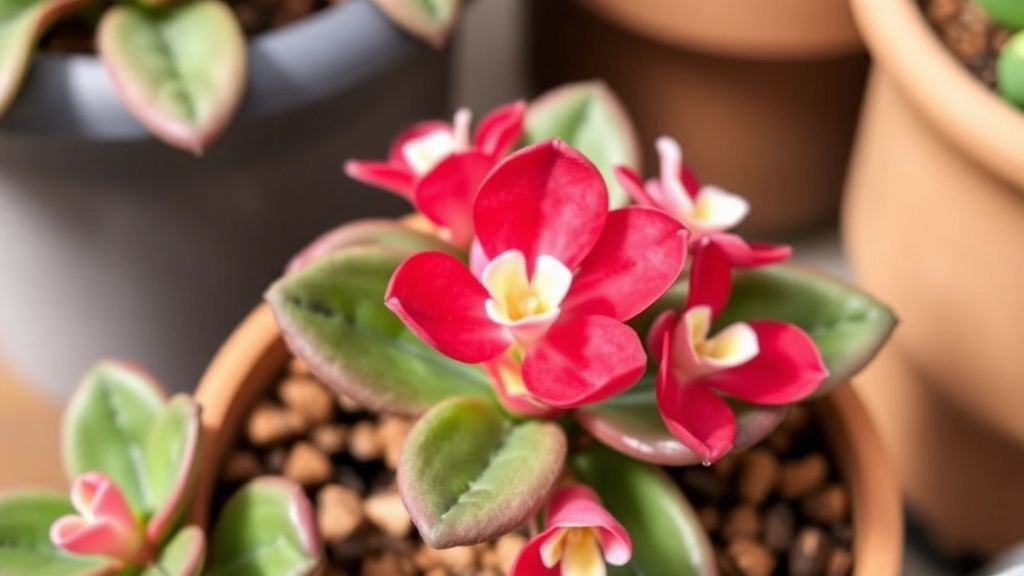
So, your Kalanchoe isn’t looking its best, huh?
Don’t worry; we’ve all been there.
Here’s how to breathe new life into your plant and get it back to blooming beautifully.
Assess the Situation
First things first, take a good look at your Kalanchoe.
- Leaves: Are they yellowing or dropping? This might mean overwatering.
- Stems: Are they mushy? That’s a sign of rot.
- Flowers: Are they wilting? It could be a lack of light.
Adjust Watering Habits
Watering is often where we go wrong.
- Let it dry out: Make sure the top inch of soil is dry before watering again.
- Use well-draining pots: This helps avoid soggy roots.
Check for Light
Kalanchoes love bright, indirect light.
- Location: Move it closer to a window if it’s looking leggy.
- Rotate the plant: This helps all sides get equal light.
Reevaluate Soil Quality
Sometimes, it’s all about the soil.
- Repot if necessary: If the soil is compacted or old, switch to fresh, well-draining mix.
- Add perlite or sand: This boosts drainage.
Fertilize Wisely
A little boost can go a long way.
- Use a balanced fertilizer: Feed it once a month during the growing season.
- Dilute it: Half-strength is often enough to avoid burning the roots.
Pest Check
Pests can sneak in and wreak havoc.
- Inspect regularly: Look for tiny bugs or webbing.
- Treat promptly: Use insecticidal soap or neem oil if you spot any.
Patience is Key
After making these changes, give your Kalanchoe time to bounce back.
- Keep an eye on it: Watch for new growth or signs of improvement.
Seasonal Care Guide for Indoor and Outdoor Kalanchoe
Caring for Kalanchoe throughout the seasons can feel overwhelming, especially when trying to keep them blooming beautifully.
Spring: Awakening Growth
As spring arrives, Kalanchoe begins to wake from its dormancy.
- Light: Ensure your plant receives bright, indirect sunlight to encourage new growth.
- Watering: Increase watering frequency, allowing the soil to dry out between sessions.
- Fertilization: Apply a balanced fertiliser every four weeks to support blooming.
Example:
I remember my first spring with Kalanchoe. The vibrant blooms were a delightful surprise after a dull winter.
Summer: Thriving in Warmth
Summer is the prime time for Kalanchoe, as the warmth enhances growth.
- Light: Provide ample sunlight, but be cautious of direct afternoon rays which can scorch the leaves.
- Watering: Maintain a consistent watering schedule, ensuring the soil remains slightly moist.
- Humidity: If outdoors, ensure they are in a shaded area during extreme heat.
Tip:
Consider moving your Kalanchoe outdoors for fresh air and natural light, but acclimate it gradually to avoid shock.
Autumn: Preparing for Dormancy
As autumn approaches, Kalanchoe starts to slow down.
- Light: Reduce direct sunlight exposure gradually.
- Watering: Cut back on watering as the plant requires less moisture.
- Fertilization: Stop fertilising to allow the plant to prepare for dormancy.
Personal Insight:
I often find that my Kalanchoe’s leaves change colour slightly in autumn, signalling the shift in its growth cycle.
Winter: Dormant Care
Winter can be challenging for Kalanchoe, as they enter a dormant phase.
- Light: Position your plant in a bright spot, as it still needs light, albeit less intense.
- Watering: Water sparingly, ensuring the soil is completely dry before the next watering.
- Temperature: Keep the environment warm, avoiding cold drafts.
Reminder:
During this time, resist the urge to fertilise, as it can stress the plant. For more information on how to care for Kalanchoe during winter, you can refer to our complete guide on caring for Kalanchoe after flowering.
If you are looking to expand your Kalanchoe collection, consider learning about the top Kalanchoe Mother of Thousands varieties and their care tips.
FAQs on Blooming Succulent Kalanchoe
What are the light requirements for Kalanchoe?
Kalanchoe thrives in bright, indirect sunlight. Place it near a south-facing window but avoid direct rays to prevent leaf scorching. If the plant looks leggy, it may need more light.
How often should I water my Kalanchoe?
Water your Kalanchoe sparingly. Allow the top inch of soil to dry out before watering again. Overwatering can lead to root rot, so ensure your pot has good drainage.
What type of soil is best for Kalanchoe?
Kalanchoe prefers well-draining soil. A cactus mix or a DIY mix of regular potting soil with sand or perlite works well. Aim for a slightly acidic to neutral pH (around 6.0 to 7.0).
How do I fertilize my Kalanchoe?
Fertilize every 4-6 weeks during the growing season (spring and summer) using a balanced, water-soluble fertilizer diluted to half strength. Stop fertilizing as the plant goes dormant in fall.
What are common mistakes in Kalanchoe care?
Common mistakes include overwatering, insufficient light, ignoring fertilization needs, neglecting pruning, and using poor soil. Each of these can hinder your plant’s growth and blooming potential.
How can I revive a struggling Kalanchoe?
Assess the situation by checking the leaves, stems, and flowers. Adjust watering habits, ensure proper light, reevaluate soil quality, fertilize wisely, and check for pests. Patience is key as the plant recovers.
When and how should I prune my Kalanchoe?
Prune after the flowers have faded and the plant looks scraggly. Remove dead blooms, trim back leggy growth, and shape the plant using clean, sharp scissors or pruning shears. Always leave a few healthy leaves on each stem.
What are the signs of overwatering my Kalanchoe?
Signs of overwatering include yellowing leaves, mushy stems, and root rot. Allow the top inch of soil to dry out before watering again and use well-draining soil to prevent excess moisture.
How do I know if my Kalanchoe needs more nutrients?
Signs of nutrient deficiency include pale leaves and stunted growth. Use a balanced fertilizer during the growing season, typically every four to six weeks, to boost your plant’s health.
References
-
Kalanchoe Plant Care: How To Grow A Kalanchoe
-
How to Grow Kalanchoe Plants Indoors
-
Kalanchoe: How to Plant, Grow, and Care for Kalanchoe
